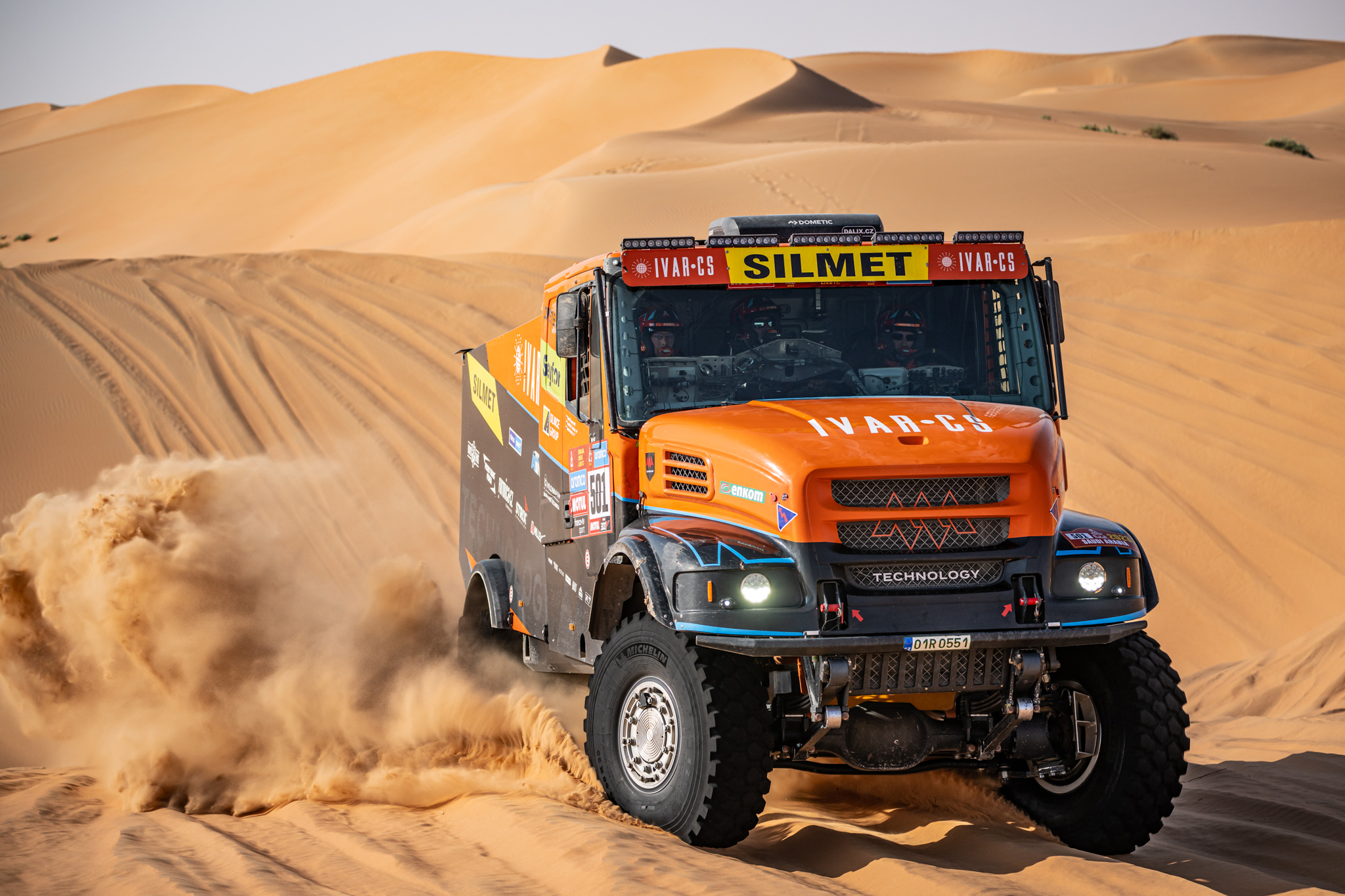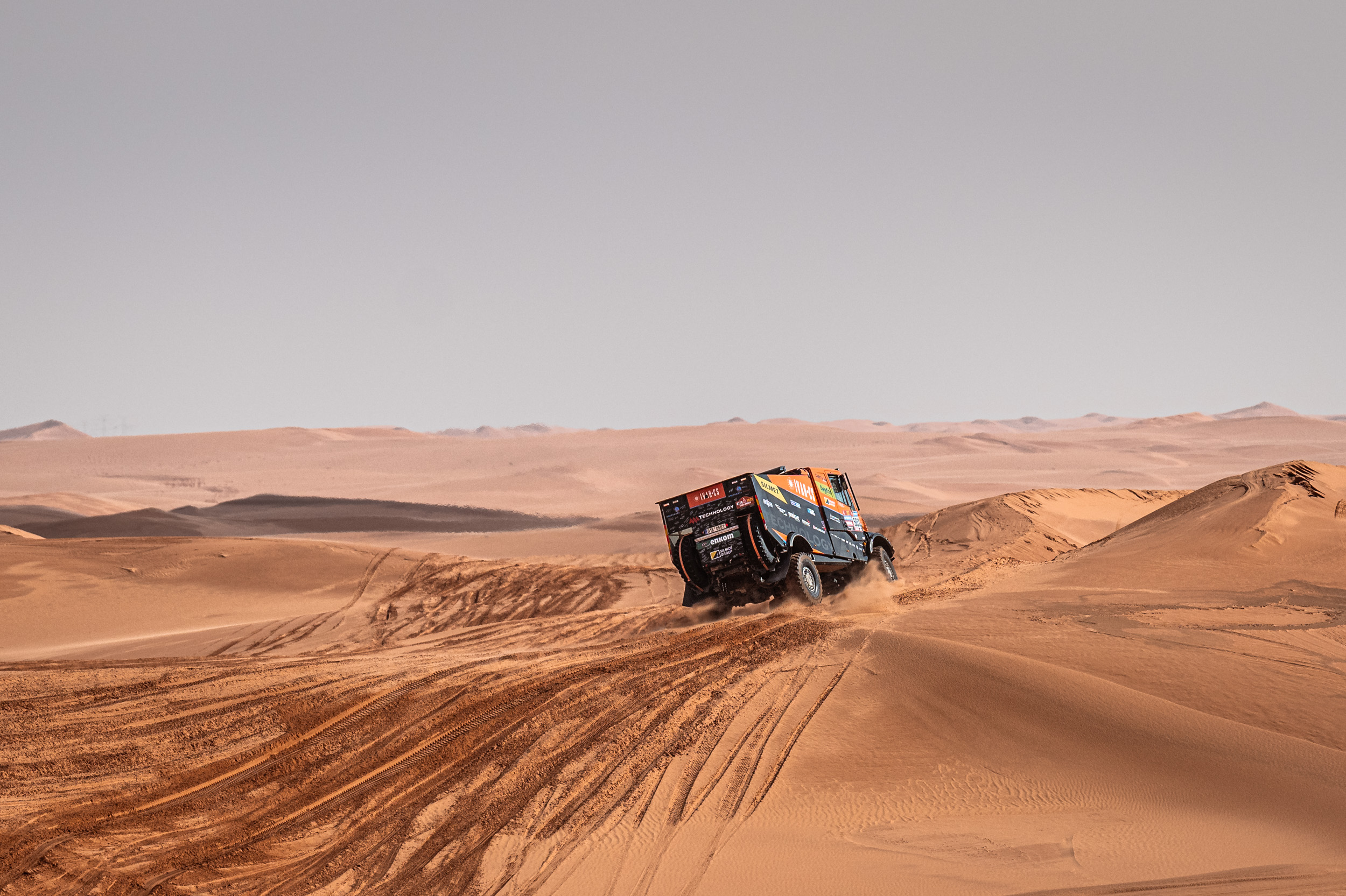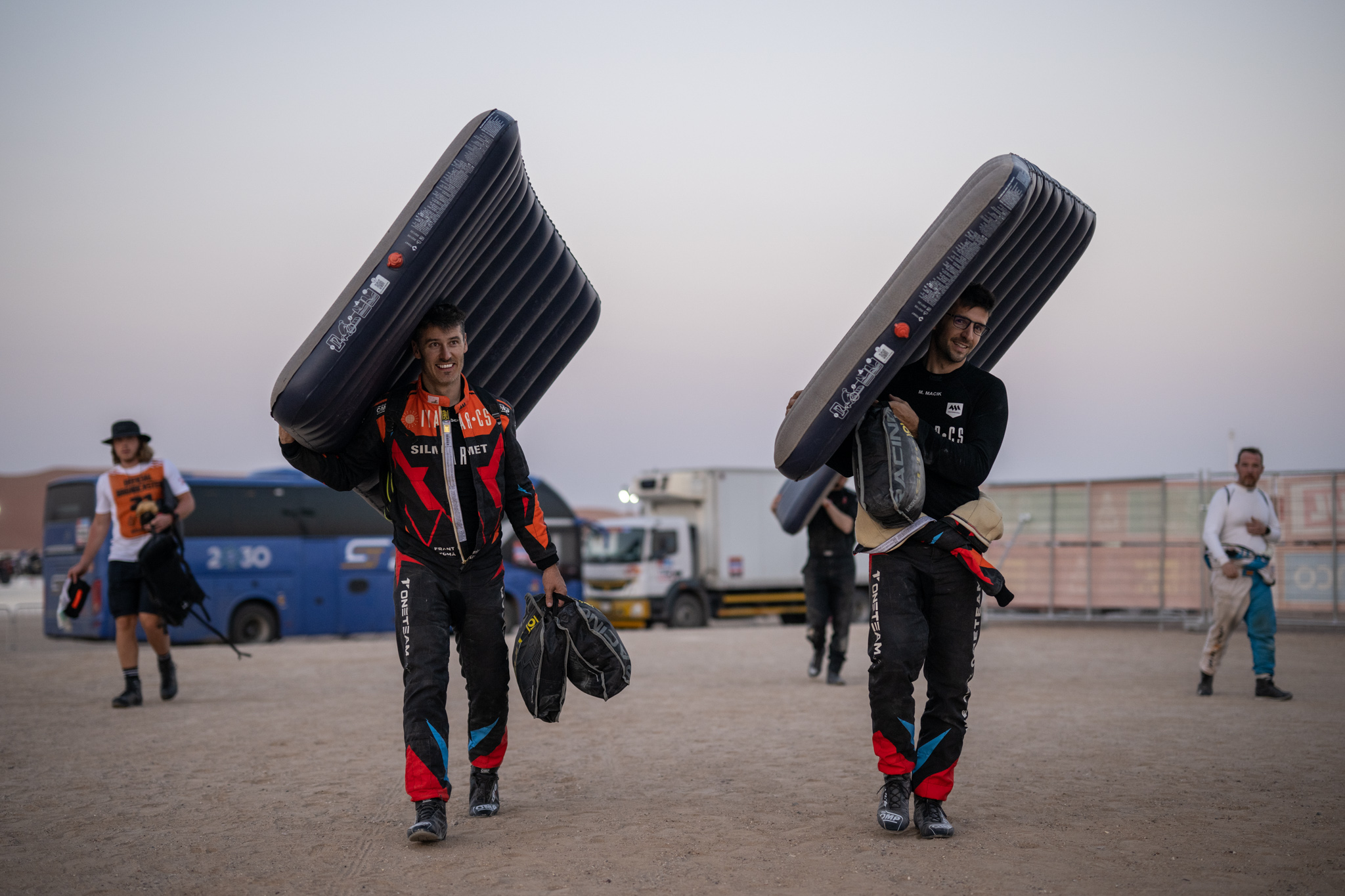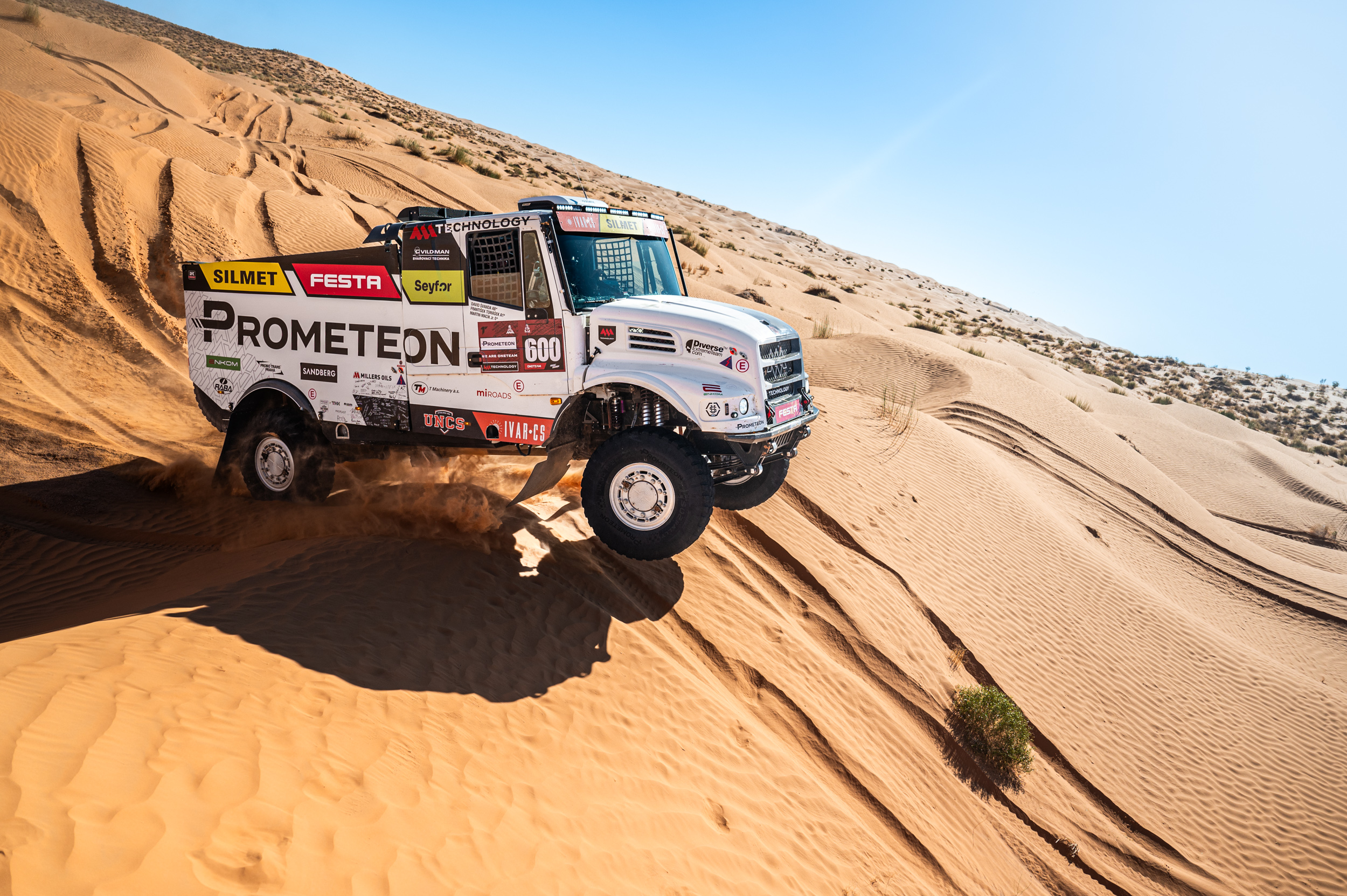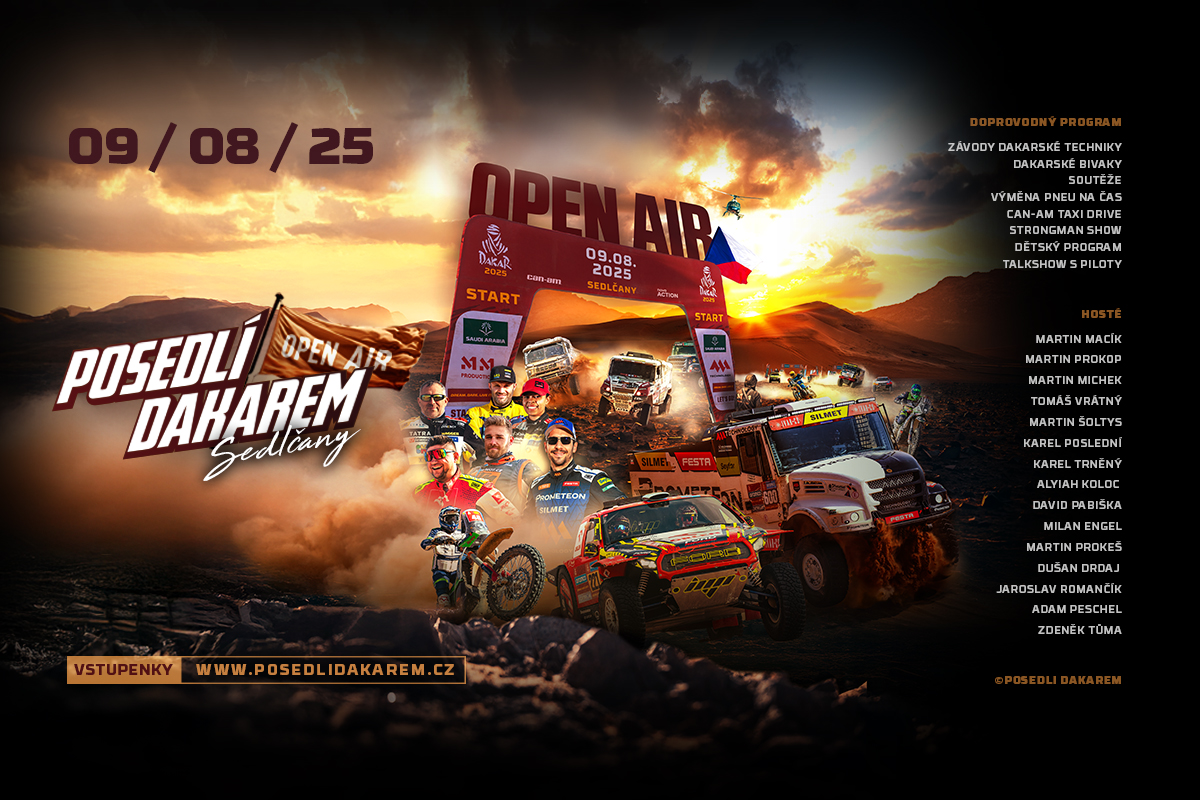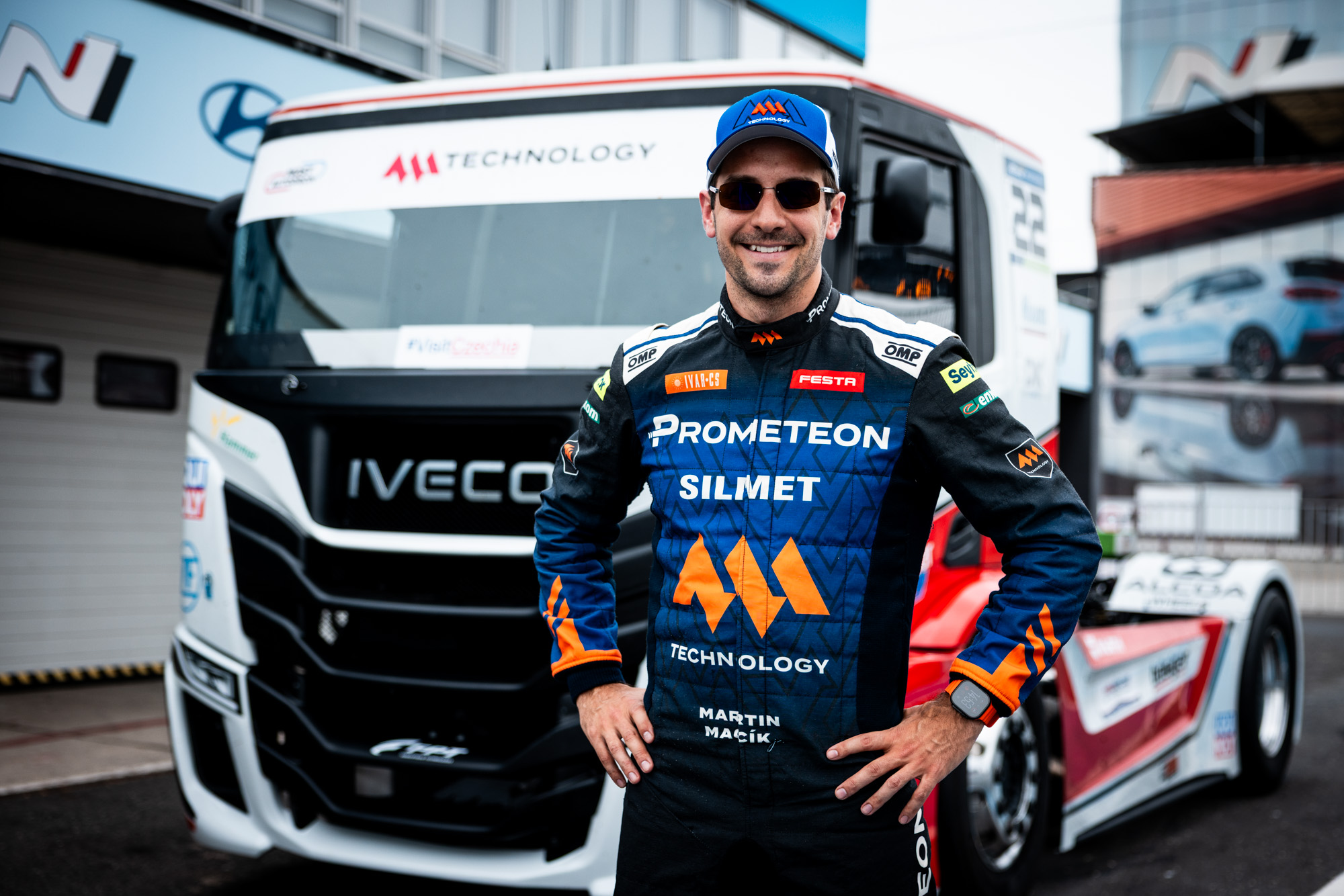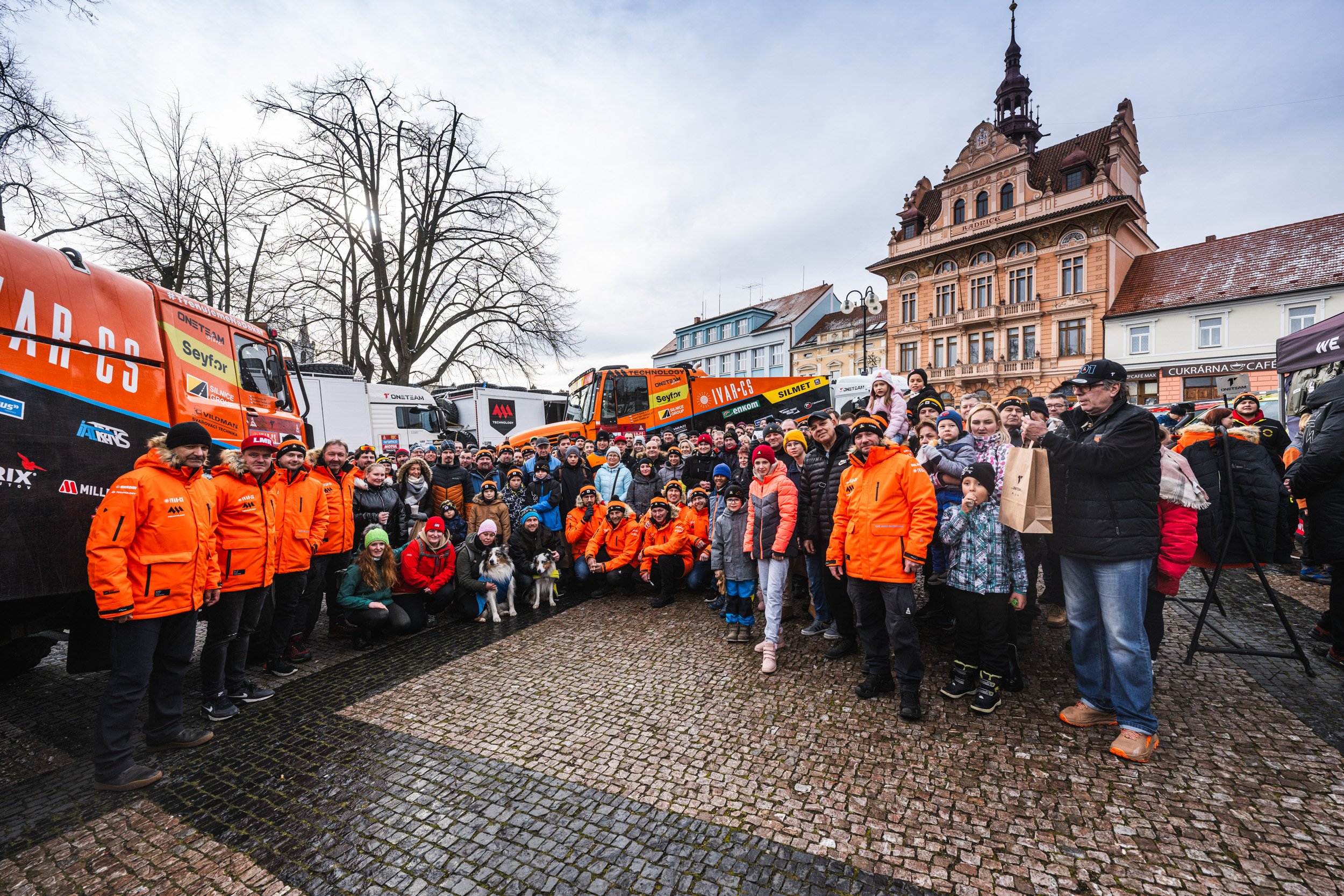On Thursday, the competitors of the Dakar set off for the 11th stage – the first part of marathons. Finally, the long-awaited dunes of the Empty Quarter were on the agenda. Pilot Martin Macik, navigator Frantisek Tomasek and mechanic David Svanda from the MM Technology team beat the dunes and finished in 2nd place, their Cenda is 3rd overall. The special stage was 274 km long, but the terrains were worth it. It was a tricky task to drive through them quickly, and at the same time be gentle with the rally truck before the night without assistance. Martin Macik’s crew raced more carefully today but lost their front shock absorbers along the way. However, replacing them yourself in a marathon bivouac should not be a major problem. The team from Sedlcany got down to work immediately after completing the stage.
Cross the biggest hill
At the finish line, the MM Technology crew acknowledged that today they experienced a real Dakar stage and terrains that are not seen that often. “It was tough. Desert, salt patches, sand, dunes. The navigation said go straight and go over the biggest hill in front of you. But sometimes the dunes couldn’t be crossed, we had to find our own way, we were terribly under-inflated. We drove more slowly over some dunes. But we climbed them all in the end. In terms of navigation, Ferry did well,” explains Martin Macik.
“From the beginning we were doing pretty well. But you could see that in the first marathon, everyone kind of played it cool, especially when we were crossing dry lakes. No one wanted to get stuck there,” adds navigator Frantisek Tomasek. Despite greater caution, however, the orange truck’s drive was not entirely without some hiccups. “We tried to go as fast as possible. But at one point we didn’t see a hole in time, jumped between 3 bumps, and damaged the shock absorbers on the front cabin. We had to sort it out and stopped twice. Fortunately, the truck survived, Cenda is a real chad. We made it to the end successfully. We should be able to handle the repair,” estimated on-board mechanic David Svanda.
Despite minor complications, the crew of the MM Technology team finally got to the marathon bivouac safely. “Martin drove well, I have to praise him too. It was really rough, sometimes we barely climbed up, then we were tumbling down again. Anyone who hasn’t experienced it can hardly imagine it. But we are at the finish line. Everything is great and we’re going to fix everything right away,” concluded navigator Frantisek Tomasek. The Cenda truck is already in parc fermé, where the crew is working on it now, but according to reports, it seems to be in a fair condition overall, and repairing the shock absorbers should not be difficult.
Tools in hand, ear plugs inserted
Marathon stages tend to be the stress test of every Dakar. They are scheduled in the second half of the rally, when the riders are already tired, and their machines have been through a lot. A fundamental change compared to a regular stage is that the crews spend the night separately from their teams and assistance, and after finishing the stage they have to handle all the repairs themselves. Good preparation is the key, so competitors take tools and spare parts with them. And naturally, they try to be gentler with their machinery in the first marathon part so that they don’t have to solve a fatal technical problem.
If the Dakar drivers can manage the evening repairs in a reasonable time, in most cases they go to sleep with other snoring colleagues in the common areas. That’s why it’s worth to prepare for a marathon night too. Inflatables, earplugs, and this year even warm sleeping bags can make a group sleep much more pleasant. We believe that today, Martin, Franta and David will be able to repair Cenda and at the same time get at least some sleep to gain strength for the second part of the marathon. On Friday, the dune madness will continue, and the competitors and their machines will have a hard time again.

